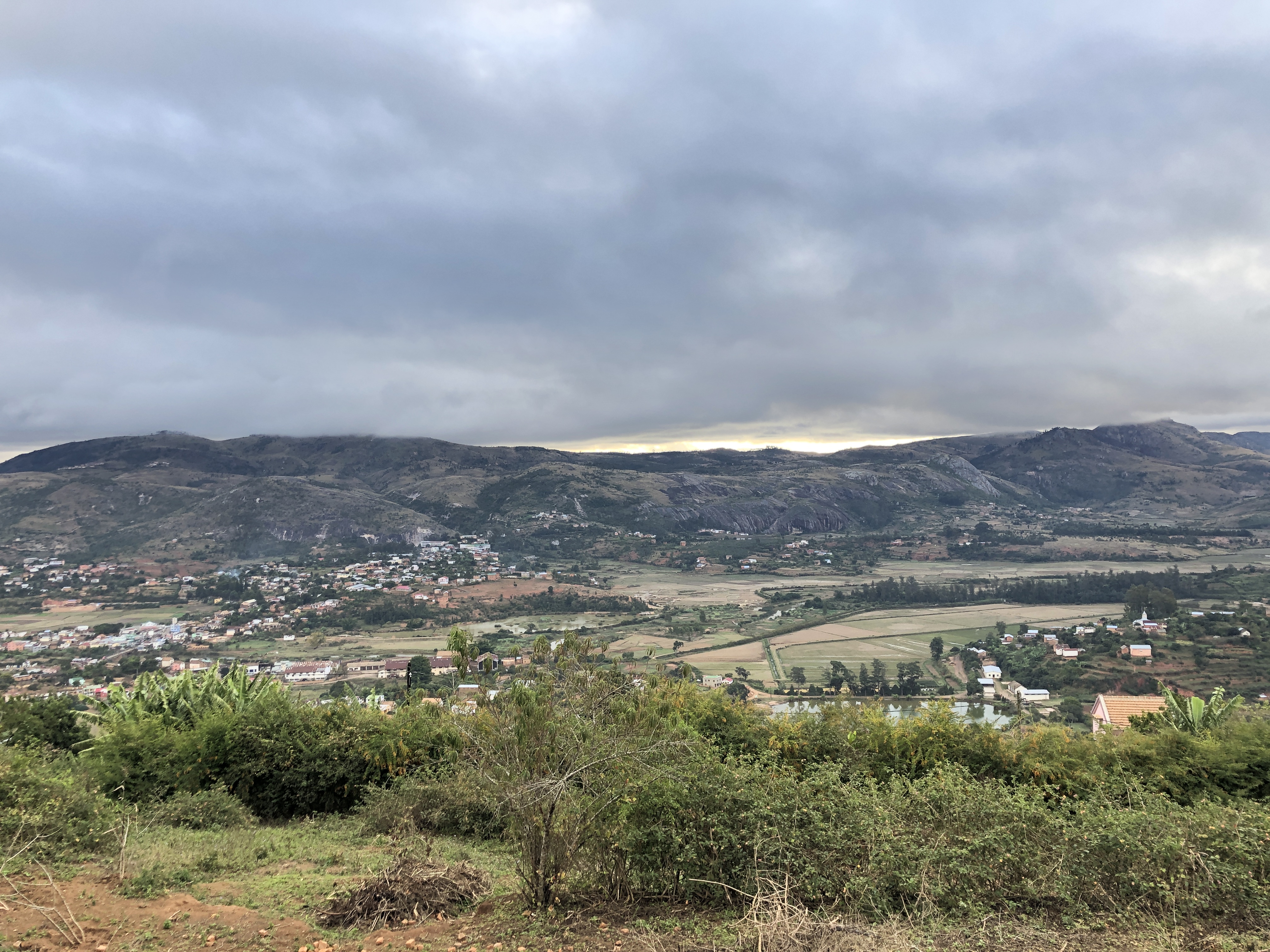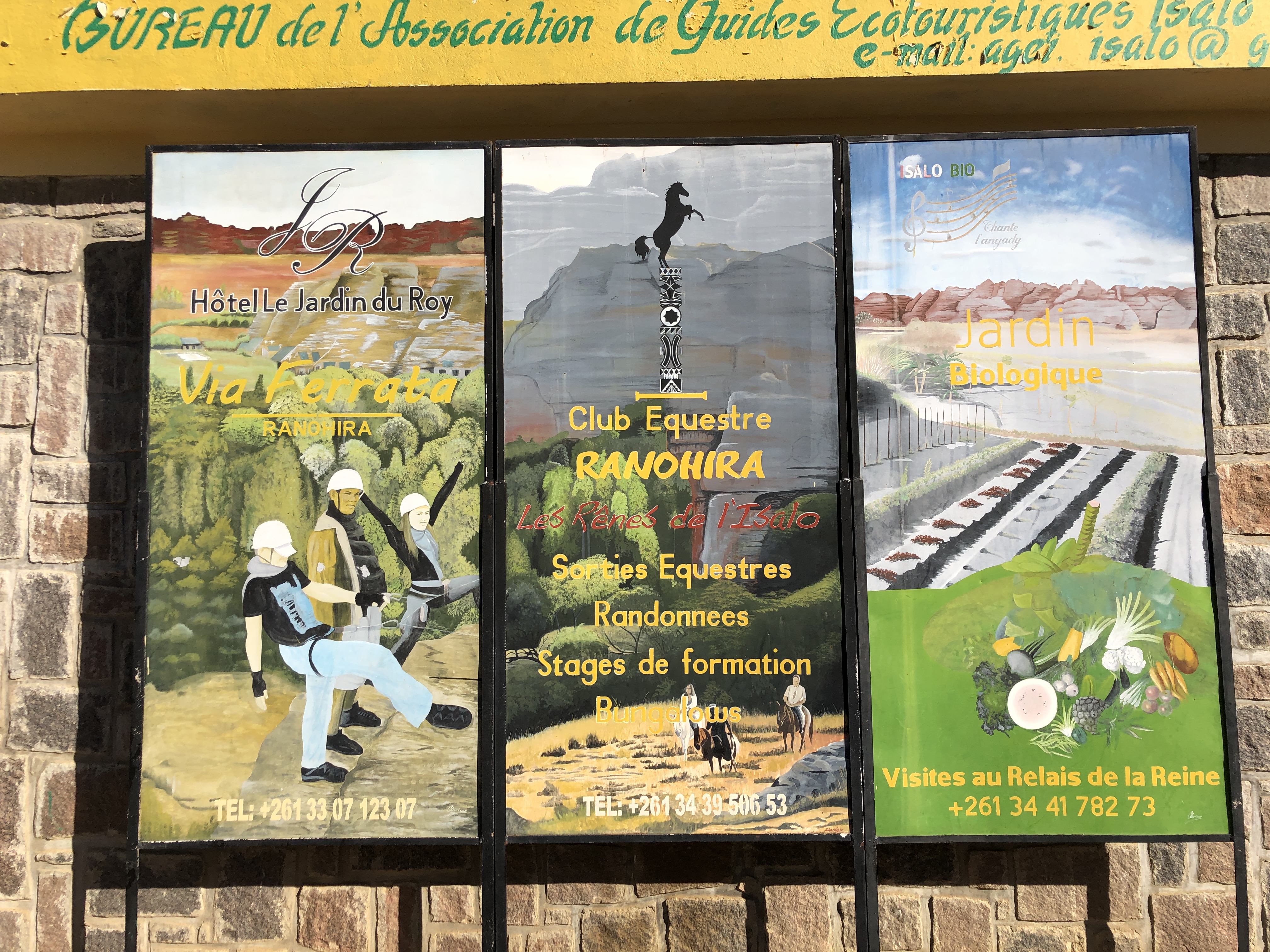
Madagascar’s second-largest city, Fianarant- soa (Fi-a-nar-ant-soo, or Fianar for short) is like a mild version of Tana. Surrounded by hills, it is both a regional commercial, administrative and religious center, and a major transit point. Tourists typically come here to spend the night on their way to Ranomafana or Isalo. The Haute-Ville is the most picturesque part of town.

We stopped here for one night and I got a chance to meet my penpal over dinner. We have been communicating over snail mail for the past three years. She lives in Tulear in the south and happened to be in Fianarantsoa to accompany her daughter for the exams. It was a jovial setting and she brought us to the best hotel in town for a meal. We had wanted to stay at Zomatel Hotel for the night but it was fully booked.

The Haute Ville is one of the top sights and we had a bird’s eye view of the city from this high vantage point. Utterly removed from the hustle of the rest of the town, the Haute-Ville feels more like a quiet hilltop village. It’s famed for its architecture – two-storey brick houses with steep roofs, balconies and tumbling plants – which dates back to the late 19th and early 20th centuries. A stroll around the cobbled streets here offers great views of the town and surrounding countryside.

We stumbled across a public school which was also the place where public executions took place in the past. Our two local friends seeked permission for us to enter the school compound so they could explain to us more about the history of the place. We also saw how children were playing happily in the open square as it was after their lessons.

There are six churches on this small hill alone, including the imposing Ambozontany Cathedral. Many of the buildings in the Haute-Ville are in a bad state of repair, but there is an association that is going about to carry out the restoration works.


Walking along the Haute Ville allowed us to catch a glimpse of the local life. As heavy vehicles were not allowed up the hill, we had a relatively peaceful walk.

There was a monument dedicated to those who had donated to the building of this village.

For those with a flexible schedule, an abundance of time and a lot of patience, a popular thing to do in Madagascar is to take the FCE (Fianarantsoa–Côte Est) railway between Fianarantsoa and Manakara on the east coast. The train leaves around 7am (theoretically – in practice it is almost always late) on Tuesday and Saturday (from Manakara it leaves at 7am on Wednesday and Sunday) and chugs along at 20km per hour on tracks built in the 1930s, reaching its destination between 12 and 24 hours later. Sometimes 48 hours later depending on the loading/unloading times along the way, the conditions of the tracks and the train, derailings (commonplace), how heavy the train is, and what the weather is like. Various factors contribute to the late arrival of the train, so you would need to be patient when taking this train.

Along the way, you’ll pass plantations, waterfalls and green hills, cross 67 bridges and four spectacular viaducts, and go through 48 tunnels. Despite its antiquity and unreliability, the train is still an economic lifeline for the people of the inland villages (where there are no roads).


Since we did not have the luxury of time to take the railway to the east coast, we just visited the railway station in Fianarantsoa to learn more about this special railway service. There was a small exhibit in the main hall to explain how the railway was constructed. The railway station itself is also a unique colonial structure to be appreciated.

There is nothing much in Finarantsoa to stay for a few days as most people make use of this city as a transit hub. One day here is good enough and the next day we headed to Isalo National Park down south.


